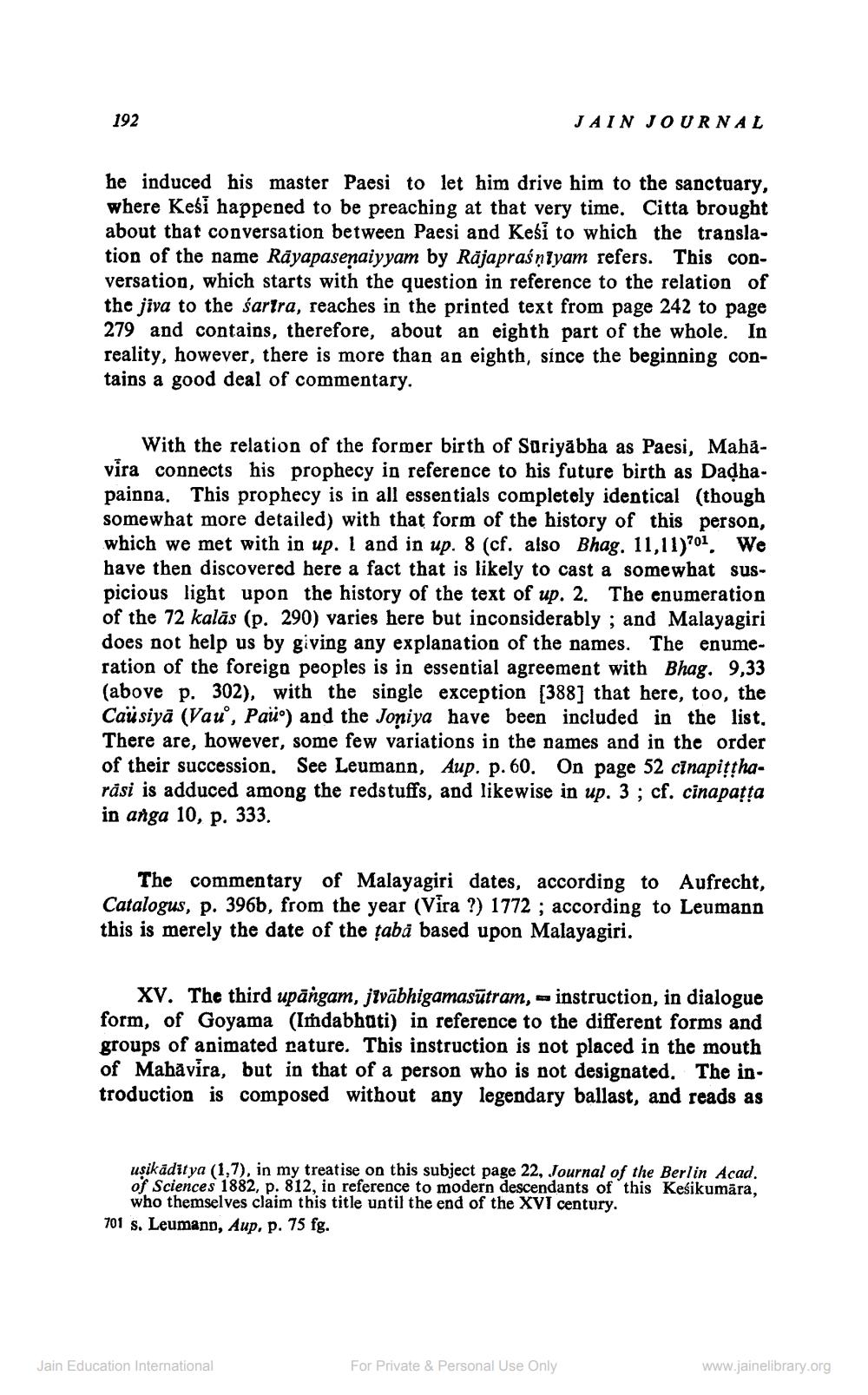________________
192
JAIN JOURNAL
he induced his master Paesi to let him drive him to the sanctuary, where Kesi happened to be preaching at that very time. Citta brought about that conversation between Paesi and Keši to which the translation of the name Rāyapasenaiyyam by Rajapraśniyam refers. This conversation, which starts with the question in reference to the relation of the jiva to the sartra, reaches in the printed text from page 242 to page 279 and contains, therefore, about an eighth part of the whole. In reality, however, there is more than an eighth, since the beginning contains a good deal of commentary.
With the relation of the former birth of Sariyābha as Paesi, Mahavira connects his prophecy in reference to his future birth as Dadhapainna. This prophecy is in all essentials completely identical (though somewhat more detailed) with that form of the history of this person, which we met with in up. I and in up. 8 (cf. also Bhag. 11,11)'01. We have then discovered here a fact that is likely to cast a somewhat suspicious light upon the history of the text of up. 2. The enumeration of the 72 kalās (p. 290) varies here but inconsiderably; and Malayagiri does not help us by giving any explanation of the names. The enumeration of the foreign peoples is in essential agreement with Bhag. 9,33 (above p. 302), with the single exception [388] that here, too, the Caü siyā (Vau, Paio) and the Joniya have been included in the list. There are, however, some few variations in the names and in the order of their succession. See Leumann, Aup. p. 60. On page 52 cinapittharäsi is adduced among the redstuffs, and likewise in up. 3 ; cf. cinapatta in anga 10, p. 333.
The commentary of Malayagiri dates, according to Aufrecht, Catalogus, p. 396b, from the year (Vira ?) 1772 ; according to Leumann this is merely the date of the tabà based upon Malayagiri.
XV. The third upāngam, jivābhigamasūtram, - instruction, in dialogue form, of Goyama (Indabhati) in reference to the different forms and groups of animated cature. This instruction is not placed in the mouth of Mahavira, but in that of a person who is not designated. The introduction is composed without any legendary ballast, and reads as
usikāditya (1,7), in my treatise on this subject page 22, Journal of the Berlin Acad. of Sciences 1882, p. 812, in reference to modern descendants of this Keśikumāra,
who themselves claim this title until the end of the XVI century. 701 s. Leumann, Aup, p. 75 fg.
Jain Education International
For Private & Personal Use Only
www.jainelibrary.org




